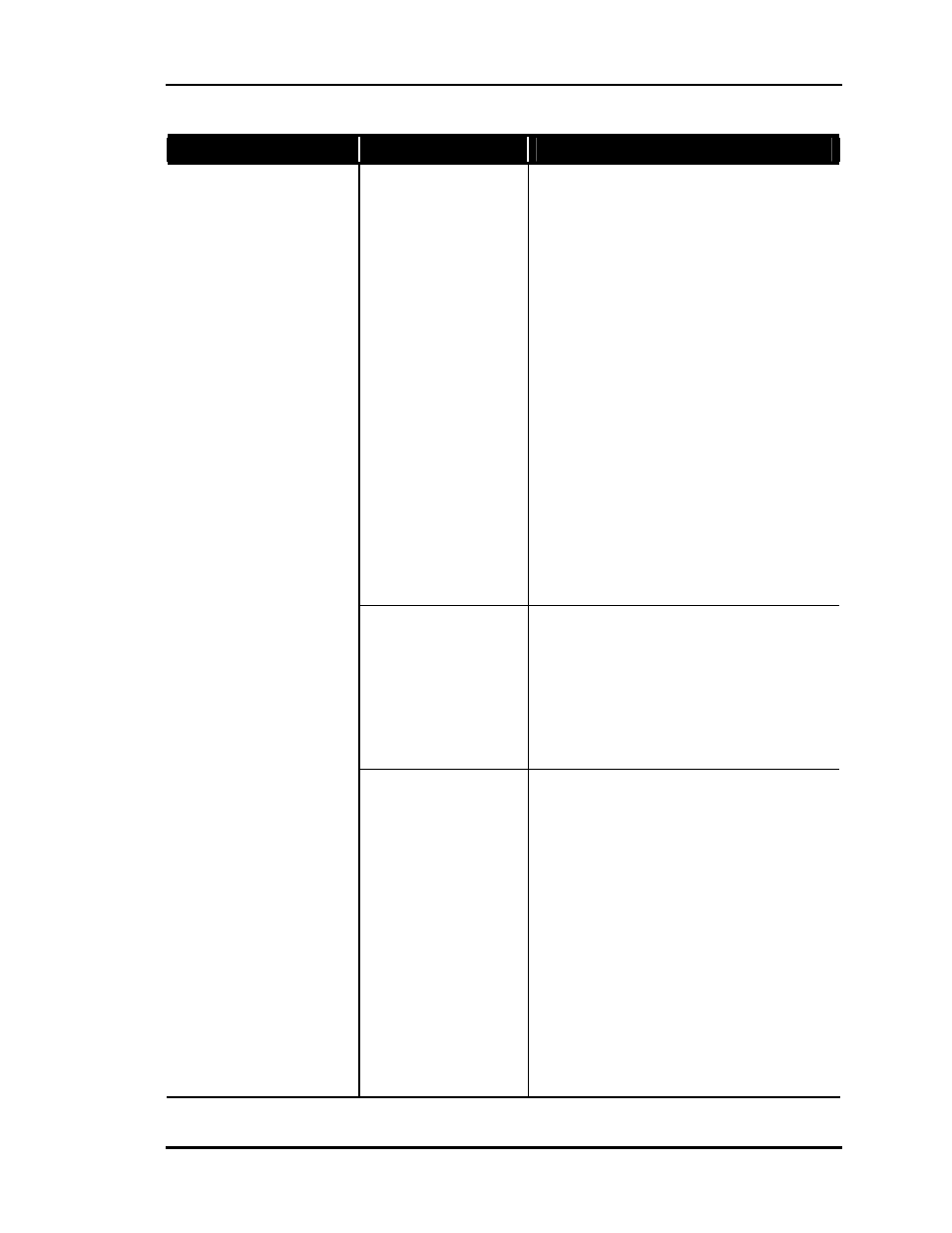Auto-Zone Control Systems Auto-Zone Basic Systems Installation & Operation (Version 02C) User Manual
Page 129

Auto-Zone Basic
Section
4
Start-Up & Troubleshooting
4-27
Problem
Possible Cause Solution
4
Bypass Damper
Sticking Damper
Depress Clutch button and check that
the damper moves freely without bind-
ing. Note: If the actuator has driven
against its “stop” screw, rotating the
actuator shaft by disengaging the
clutch may not be possible. If this is
the case, loosen the setscrews and ro-
tate the damper shaft to observe bind-
ing. If binding is observed, correct the
binding problem and force recalibra-
tion of the damper by cycling power to
the Zone Manager. If setscrews were
loosened, be sure damper shaft is prop-
erly positioned before tightening.
(Counter clockwise = closed = Direct
Acting)
Warning: Actuator can be damaged
if rotation is forced! Make sure the
clutch button is fully depressed before
rotating damper.
Improper
Wiring
Determine that wiring matches Figure
2-5.
Note: If more than one bypass
damper is wired in parallel, connect
only one of the feedback pots as
shown in the schematic wiring diagram
Figure 2-9.
Actuator
motor
failure
Check voltage to the actuator during
the calibration routine. During the
“drive closed” part of the calibration,
24 VAC should be measured between
“GND” and “Close” on the terminals.
The red LED on the bypass and slave
interface card should also light up.
Similarly, 24 VAC should be measured
between “Open” and “GND” in the
drive open phase of the calibration rou-
tine, and the green LED light on the
bypass and slave interface card should
also light up. If 24 VAC is present, but
the actuator does not drive, replace ac-
tuator. See Figure 4-11.